Cultural and Historical Connections
How does the CA-CESU use science to acknowledge, promote, and support traditional practices and our nation’s heritage? Integrative conservation efforts that incorporate both scientific and cultural/historic viewpoints can inspire a more holistic approach to conserving natural and culturally significant resources. Incorporating these practices into our science efforts showcases how scientific knowledge can be coupled with the value of culture to steward natural ecosystems and cultural resources. Learn more about projects that are creating cultural and historical connections below.
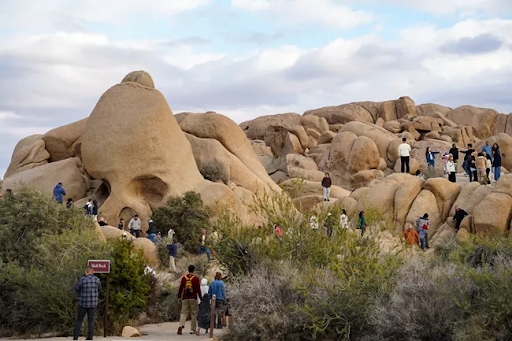
[image caption]
Evaluating Spring Visitor Information in Joshua Tree National Park
Years Active: 2024-2029
PI: Matthew Brownlee (Clemson University)
This project seeks to evaluate visitor information for Joshua Tree National Park (JOTR). Investigators from Clemson University and the NPS will collaborate to complete the following study objectives. Firstly, they will identify and evaluate visitor demographics, preferences, and important experiences with statistical comparisons across multiple sites at JOTR. This evaluation will consider visitors across multiple user groups, including campers, day users, climbers, and backpackers, all within the spring season. Additionally, the project will collect and evaluate temporal and spatial patterns of visitor use and compare newly collected data to previous JOTR data, where methodologically appropriate and possible. The project will focus on previous visitor use data from 2019 and 2010 to evaluate changes in park visitation.
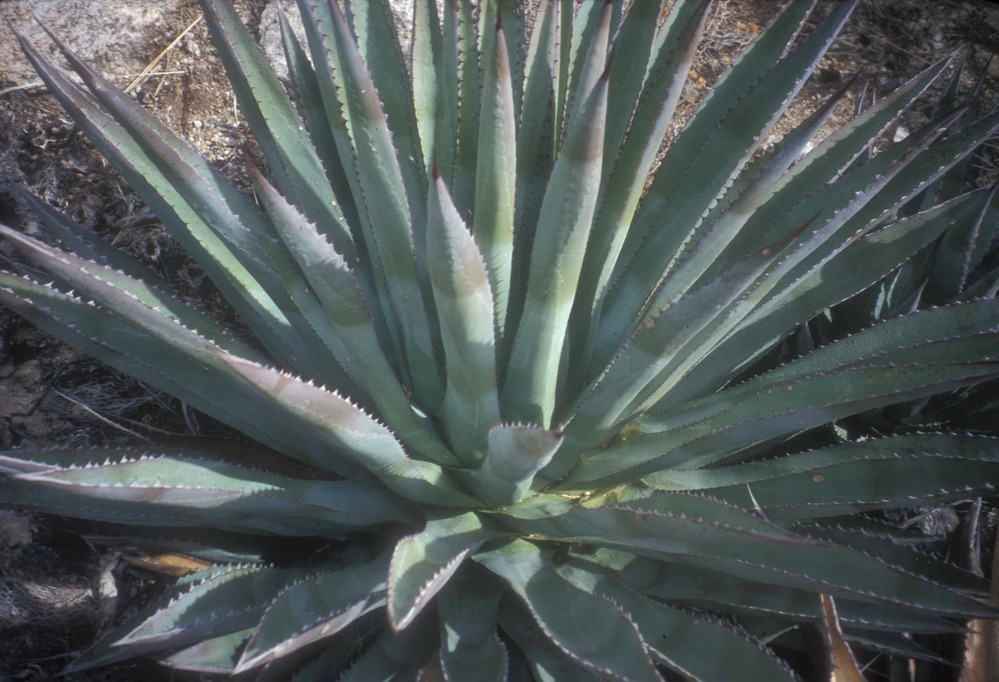
[image caption]
Engaging Youth in Park Science by Surveying Agaves and Archeological Sites
Years Active: 2023-2033
PI: Nicole Mathwich (San Diego State University)
Six agave cultivars have been found throughout Arizona that are likely associated with ancestral agriculture. This project will survey areas in Saguaro National Park, Coronado National Memorial, and other Sonoran Desert NPS units for evidence of past agave agriculture and living agave species. Additionally, the project will use survey data to investigate the former and continuing relationship between Indigenous inhabitants and agave agriculture.
To do so, this project will train students in archaeological survey methods, including the use of GIS hardware and software. Participants will be educated on co-locating remnant agave stands and archeological features. The project will support an archaeological field school that is co-stewarded with Indigenous students and elders. The information generated by this project will be used to increase public awareness, knowledge, and support for the stewardship of archeological resources throughout the Southwest. It will also aid the NPS with cultural resource management across Saguaro National Park, Coronado National Memorial, and other areas.
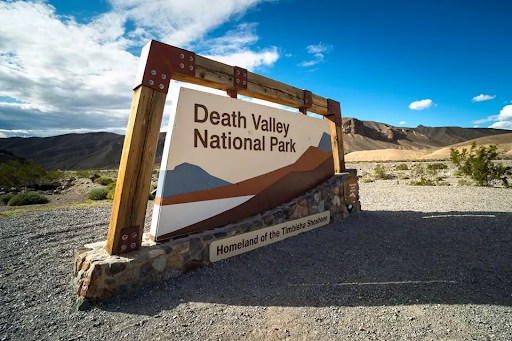
[image caption]
Public History Internship Program in Death Valley National Park
Years Active: 2024-2029
PI: Jared Orsi (Colorado State University)
This project aims to create ongoing opportunities for students to gain experience in cultural resource management and develop the necessary technical skills for public historians. More specifically, this project will provide multiple internship opportunities for students to work with the NPS to protect and preserve cultural resources in Death Valley National Park (DEVA). Students will work with Colorado State University’s Public and Environmental History Center and DEVA staff to apply classroom skills to work in the field.
The first internship opportunity will involve working with oral histories to document historical information and share it with the public. Interns will be transcribing a series of oral history recordings from Pauline Esteves, and incorporating her story into the DEVA website. Pauline Esteves is a retired Timbisha Shoshone Tribal Chairperson and activist who successfully fought for a portion of DEVA land to be returned to the Timbisha Shoshone Tribe in 2000. Interns will also be conducting additional oral history work with another chosen figure in DEVA modern history. There will also be opportunities for interns to participate in additional professional development activities like public presentations and shadowing park employees. The NPS will be better equipped to protect and share cultural resources within DEVA as a result of this project, increasing access to a piece of the cultural heritage of the United States.

Identification and Conservation Treatment of Port Chicago Metal Fragments
Years Active: 2024-2029
PI: Dr. Christopher Dostal (Texas A&M University)
The Port Chicago Naval Magazine National Memorial was established in 1992 to mark the site of the Port Chicago explosion, the worst homefront disaster in the United States during World War II. During the explosion on July 17, 1944, one Victory ship and one Liberty ship and their contents were expelled into the surrounding area. Thousands of fragments of ship parts, munitions, supplies, furnishings, two piers, and several train cars destroyed by the explosion fell into the Suisun Bay, which is tidal and contains salty, brackish water. In a survey to determine the distribution and quantity of unexploded ordnance (UXO) in the Port Chicago area, debris was recovered from the Carquinez Strait and transferred to the National Park Service in 2014.
Metal artifacts exposed to marine environments have higher levels of chloride salts, which accelerate corrosion and deterioration. This project aims to provide stabilizing conservation treatment and identification of these metal archaeological artifacts. This work includes removing chlorides on the artifacts, converting any possible corrosion materials back to a lower oxidation state, and sealing the artifacts to prevent future corrosion. Following conservation treatment, some objects will be included in future exhibits and displays at the Port Chicago Naval Magazine National Memorial Visitor Center.
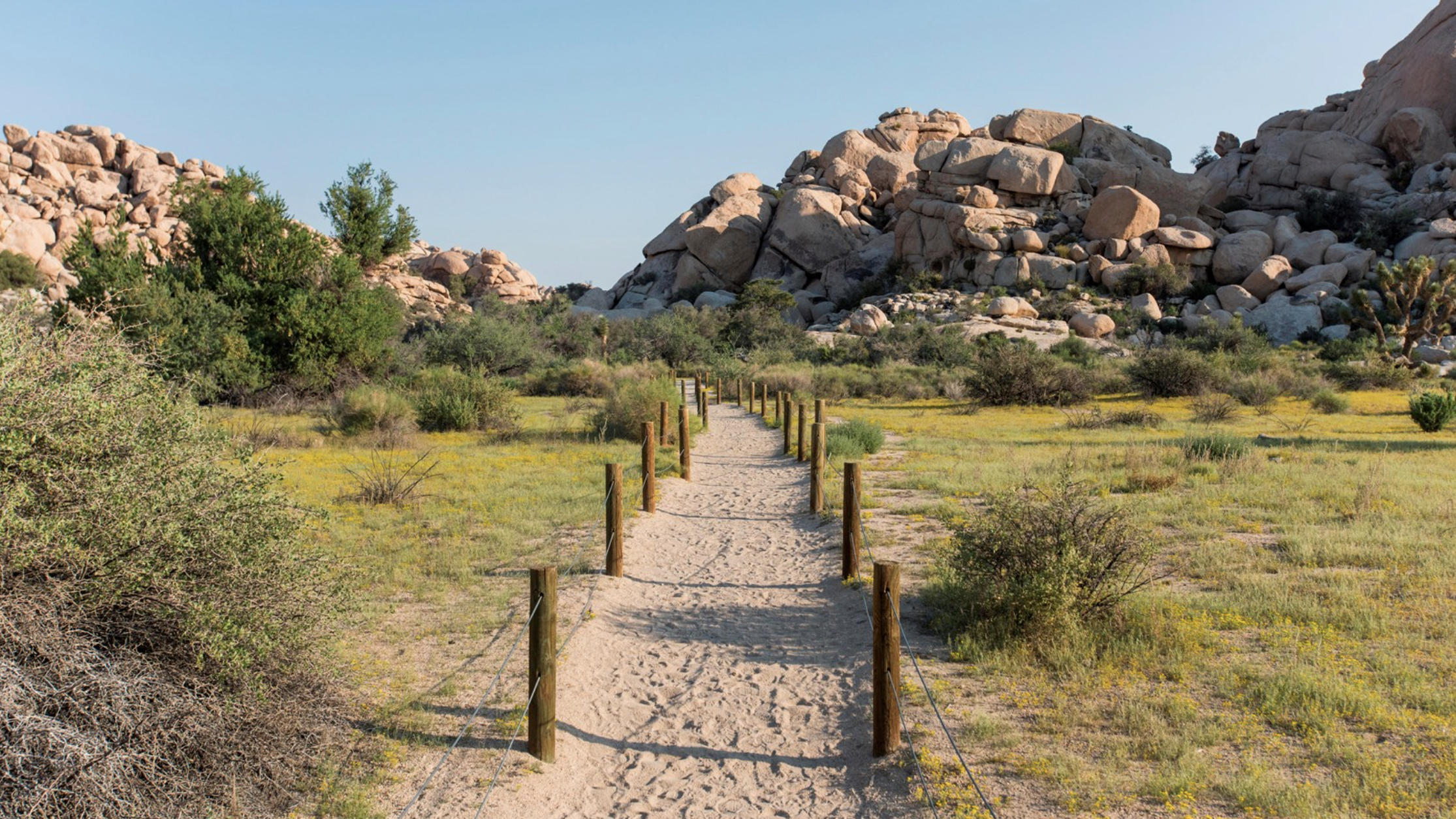
[image caption]
An Ethnographic Resource Inventory of Culturally Significant Landscapes, Joshua Tree National Park
Years Active: 2024 - 2028
PI: Dr. Douglas Deur (Portland State University)
Joshua Tree National Park encompasses 794,000 acres of land, including land culturally significant to four tribal communities: the Cahuilla, Serrano, Chemehuevi, and Mojave. Certain places within the park are associated with oral traditions about the creation, ceremonial traditions, and procontact experiences of those ancestral tribes. As Joshua Tree National Park is a popular place for recreational activities and visitors, there is a large number of recreational rock climbers who scale rock formations that are rich in rock art and other archaeological resources important to indigenous communities. Park visitation on a whole can have material and immaterial effects on archaeological resources, sensitive cultural areases, and culturally significant natural resources, such as plants within the park. The National Parks Service intends to collaborate with Portland State University to complete an inventory of ethnographic resources (ER), documenting places and resources of unique significance to park-associated tribes. They will conduct this by assembling information through literature reviews as well as extensive communications with park-associated tribes. The goal of this project is to incorporate tribal perspectives into park management planning to better understand the effects of rock climbing on different sites, such as Barker Dam area, and the Northern Wonderland/Indian Cove area, which will then guide the park's upcoming Climbing Management Plan (CMP), and overall provide a more holistic approach to improve protection and preservation of all cultural resources.
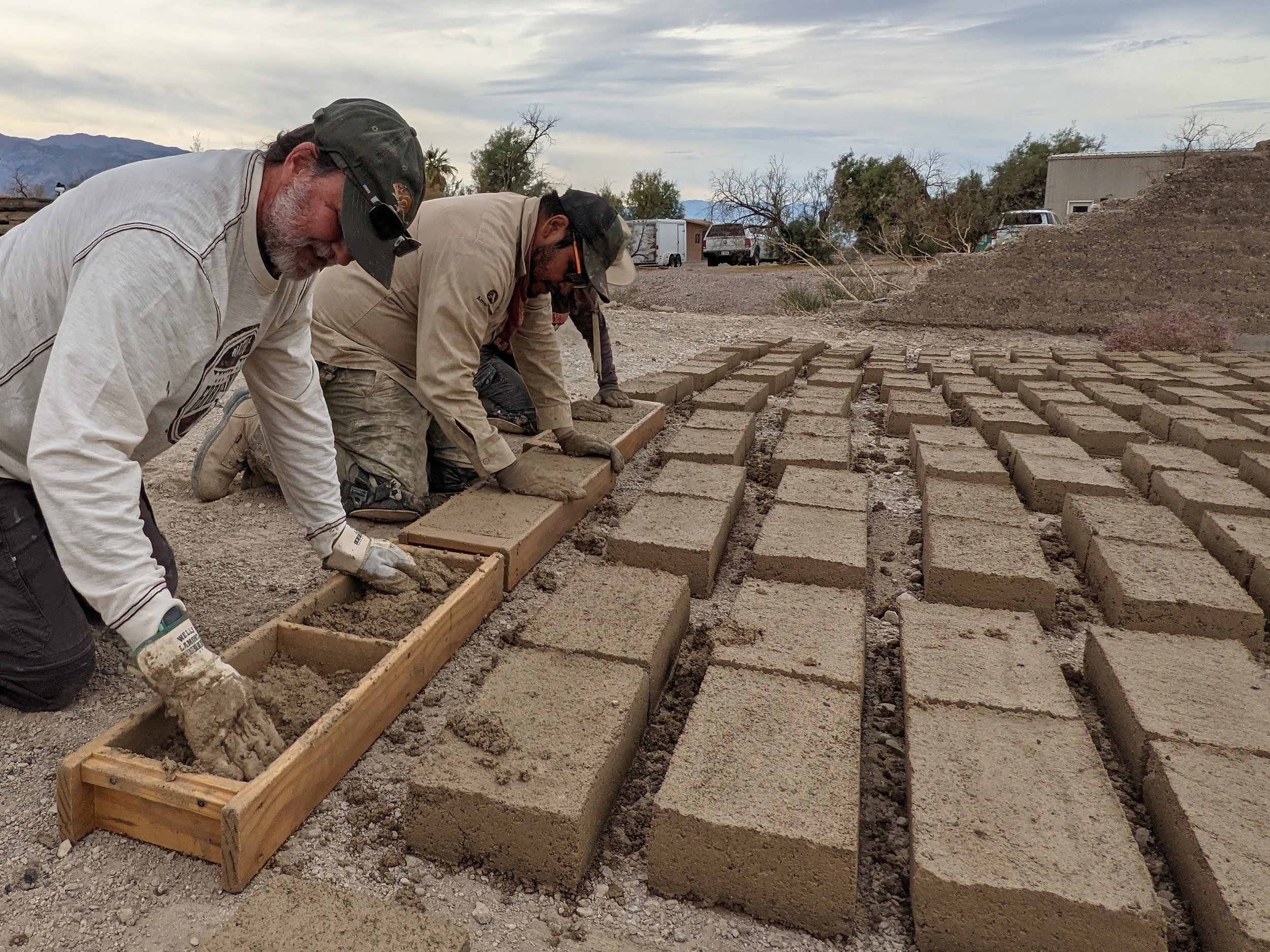
Adobe Preservation and Rehabilitation in Death Valley National Park
Years Active: 2021-2026
PI: John Barrow (Cornerstone)
Students, volunteers, and interns work side-by-side with experienced historic preservation professionals to gain hands-on experience in the practice of historic preservation through the assessment, preservation, and reconstruction of historic adobe structures and buildings in Death Valley National Park. Participants were taught techniques to assess adobe conditions, manufacture and install new adobe bricks, and execute an actual preservation project on a historic resource. This work helps raise awareness about locally-sourced, natural building materials and demonstrates techniques which promote earth as a building material for future generations. This work also helps support ongoing training of NPS staff in specialized historic preservation techniques and materials.

Cesar Chavez National Monument Museum and Archive
Years Active: 2021-2024
PI: Anne Gilliland (University of California, Los Angeles)
Cesar E. Chavez National Monument has a significant collection of artifacts and archives with direct connections to the life, work, and family of the foremost Latino American leader of the Twentieth Century. This project recruits two students from the UCLA graduate program in Archival Studies to assist the Sequoia and Kings Canyon National Parks museum staff with processing and cataloging of archival materials.
Approximately 2,000 museum documents and artifacts from Cesar E. Chavez National Monument will be processed and cataloged into the Interior Collections Management System. Resulting catalog records will in turn be made available to the public through the NPS web catalog. Additionally, the interns will create digital copies of objects on exhibit to replace fragile originals that need to be placed in secure storage.
Cesar E. Chavez was one of the foremost Latino American leaders of the Twentieth Century. This project will improve accessibility to the collections and their intellectual content for both park staff and outside researchers by producing a searchable database and the ability to find paper finding aids. The public will also benefit from the physical preservation of a portion of historically significant archival resources within the NPS.

Preserving the Historic Records of Parks
Years Active: 2021-2025
PI: Emily Lin (University of California, Merced)
Students from UC Merced will assist Sequoia and Kings Canyon National Park museum staff with digitizing and publishing archival information. This is part of a larger effort to make available the majority of the parks' archival holdings. The preservation of these archival holdings will be aid in future research endeavors.
Over the course of the project, documents will be digitized, converted to machine-readable formats, and uploaded onto NPS and UC web-platforms. This project will also include the survey of collections, preparation of inventories, appraisal of documents, archival re-housing and preservation work, preparation of descriptive narrative, and more.

WWII Home Front Oral History Digitization, Transcription and Enhanced Access
Years Active: 2022-2024
PI: Paul Burnett (University of California, Berkeley)
Starting in 2001, the National Park Service (Rosie the Riveter/WWII Home Front National Historical Park) began collaboration with the Oral History Center of the Bancroft Library at the University of California, Berkeley to collect oral histories of the WWII home front. The WWII Home Front Oral History Collection now includes over 250 individual interviews consisting of over 500 hours of material. Included in the Rosie the Riveter museum collection are 140 additional audio and video-recorded oral history interviews conducted in the late 1990s-2000s by former Richmond City Council committee chairperson, Donna Powers and the Rosie the Riveter Committee as well as by students, media outlets and individuals. In a continued effort to make these additional WWII home front oral histories accessible, this project will allow for conversion of the outdated recorded formats to digital files as well as produce written transcripts of the content and include a portion of the recordings on the searchable UC Berkeley web portal.

Juan Bautista de Anza National Historic Trail: Public History Project
Years Active: 2021-2024
PI: Eddie Madril (San Francisco State University)
Through the partnership between the American Indian Studies Department at SFSU and the Juan Bautista de Anza National Historic Trail, a public history program and materials will be created to engage audiences from diverse angles. This project will focus on the section of the Anza Trail between Monterey, CA and San Francisco, CA which is the ancestral homeland of the Ohlone people. Ultimately, an inclusive, relevant and accessible public history product such as interpretive writing, oral histories, and documentary short films will be produced.
SFSU and the NPS will train students in methods to communicate the history of the Anza expedition and the 1776 time period in which the expedition took place. This training will include a summer field project with public history training and community outreach components. From this, public history products were produced which will be shared with Bay Area communities such as under-resourced groups and youth communities. These public history products will go one to serve under-resourced communities as well as serve as foundational work for approaching the commemorative events of America 250.
